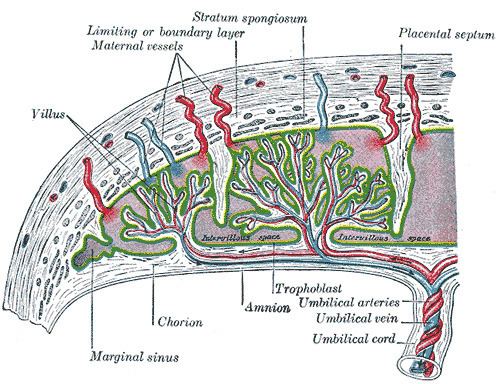 | ||
The placental microbiome is the nonpathogenic, commensal bacteria present in a healthy human placenta and is distinct from bacteria that cause infection and preterm birth in chorioamnionitis. Until recently, the healthy placenta was considered to be a sterile organ but now genera and species have been identified that reside in the basal layer.
The placental microbiome more closely resembles that of the oral microbiome than either the vaginal or rectal microbiome.
Bacterial species and genera
Culturable and non-culturable bacterial species in the placenta obtained following normal term pregnancy have been identified.
A change in the composition of the microbiota in the placenta is associated with excess gestational weight gain, pre-term birth, and decreased overall species richness and variant abundance. The placental microbiota varies between low birth weights and normal birth weights. While bacteria are often found in the amniotic fluid of failed pregnancies, they are also found in particulate matter that is found in about 1% of health pregnancies.
In non-human animals, part of the microbiome is passed onto offspring even before the offspring are born. Bacteriologists assume that the same probably holds true for humans.
